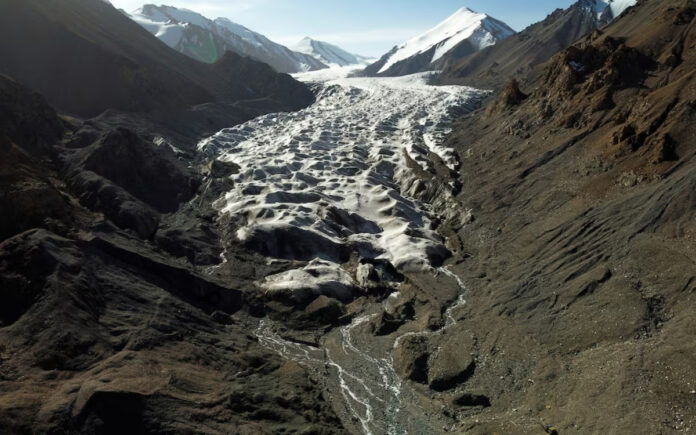Hong kong: China’s glacier area has decreased by 26% since 1960 due to rapid global warming, with approximately 7,000 small glaciers vanishing entirely, according to official data released in March. The pace of glacial retreat has intensified in recent years, raising concerns over water scarcity and increased disaster risks.
Globally, glaciers are disappearing at an unprecedented rate, with the largest recorded mass loss occurring over the past three years, a UNESCO report highlighted. Scientists and environmental groups warn that shrinking glaciers, which serve as critical water sources, will likely exacerbate competition for freshwater resources and elevate risks of environmental disasters.
China’s glaciers are primarily located in the western and northern regions, including Tibet, Xinjiang, and the provinces of Sichuan, Yunnan, Gansu, and Qinghai. Data published on March 21 by the Northwest Institute of Eco-Environment and Resources of the Chinese Academy of Sciences indicate that as of 2020, China’s total glacier area stood at approximately 46,000 square kilometers, with around 69,000 glaciers. In contrast, between 1960 and 1980, the glacier area was about 59,000 square kilometers, with roughly 46,000 glaciers, reflecting a significant decline over time.
Also Read | Trump Signs Executive Order to Overhaul US Elections, Cites India’s Model
To mitigate glacial melting, China has implemented technological solutions such as artificial snow systems and snow blankets aimed at slowing the melting process. The Tibetan Plateau, often referred to as the “Third Pole” due to its vast ice reserves, is experiencing severe ice loss, mirroring trends observed in the Arctic, the Alps, and South America.
Also Read | US General Stresses Need for Strong Military Forces in Bangladesh
The ongoing glacial retreat is expected to accelerate as climate change, driven by the burning of fossil fuels, continues to push global temperatures higher. According to the UNESCO report, this phenomenon will likely exacerbate economic, environmental, and social challenges worldwide, as rising sea levels and diminishing freshwater supplies threaten communities and ecosystems.



